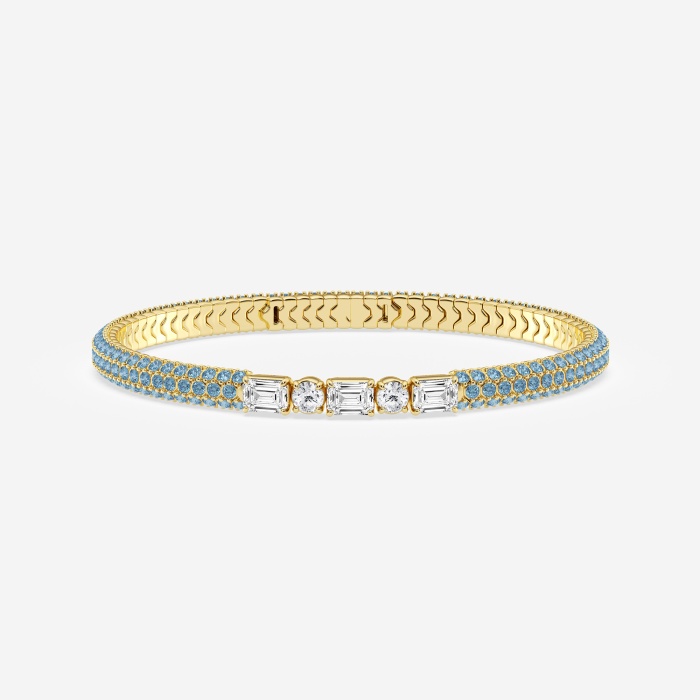Why 925 Silver is Better Than Brass for Custom Bracelets
Introduction
Custom bracelets are a popular choice for personalized jewelry, allowing wearers to express their individuality through unique designs, engravings, and materials. When choosing the right metal for a custom bracelet, two common options are 925 sterling silver and brass. While brass is often used as a cheaper alternative, 925 silver offers superior quality, durability, and long-term value.
This in-depth guide explores why 925 silver is the better choice for custom bracelets compared to brass, covering:
- Understanding 925 Silver vs. Brass
- Durability and Longevity
- Hypoallergenic Properties & Skin Safety
- Tarnish Resistance & Maintenance
- Aesthetic Appeal & Luxury Perception
- Customization & Engraving Quality
- Value Retention & Resale Potential
- Environmental & Ethical Considerations
- Common Myths About Brass vs. Silver
- Final Recommendation for Buyers
By the end of this guide, you’ll understand why 925 silver is the superior metal for custom bracelets and why investing in silver ensures a high-quality, long-lasting piece.
1. Understanding 925 Silver vs. Brass
A. What is 925 Sterling Silver?
- Composition: 92.5% pure silver + 7.5% copper (or other strengthening metals).
- Why 7.5% alloy? Pure silver (99.9%) is too soft for jewelry; copper adds durability.
- Hallmark: Authentic 925 silver is stamped with “925″ to certify purity.
B. What is Brass?
- Composition: Primarily copper (60-70%) + zinc (30-40%).
- Properties: Cheaper than silver, prone to tarnishing, and may cause skin reactions.
- Common Uses: Costume jewelry, decorative items, and budget-friendly accessories.
Key Differences at a Glance
| Property | 925 Silver | Brass |
|---|---|---|
| Purity | 92.5% silver | 0% silver (copper-zinc alloy) |
| Durability | Strong, resistant to bending | Softer, may deform over time |
| Tarnish Resistance | Tarnishes slowly (can be polished) | Tarnishes quickly (greenish oxidation) |
| Hypoallergenic | Yes (safe for sensitive skin) | No (may cause irritation) |
| Value Retention | High (precious metal) | Low (base metal) |
| Aesthetic Appeal | Bright, luxurious shine | Duller, may discolor |
2. Durability and Longevity
A. 925 Silver is More Durable Than Brass
- Silver’s Strength: The 7.5% copper alloy makes 925 silver sturdy enough for daily wear.
- Brass Weaknesses:
- Softer and more prone to scratches and dents.
- May warp or lose shape over time.
B. Long-Term Wearability
- Silver Bracelets: Can last decades with proper care.
- Brass Bracelets: Often degrade faster, requiring frequent replacement.
Conclusion: For a long-lasting custom bracelet, 925 silver is the better investment.
3. Hypoallergenic Properties & Skin Safety
A. 925 Silver is Skin-Friendly
- Non-Irritating: Pure silver is hypoallergenic.
- Safe for Sensitive Skin: Ideal for people with metal allergies.
B. Brass Can Cause Skin Reactions
- Copper & Zinc Allergies: Many people develop green skin stains or rashes from brass.
- Nickel Contamination: Some brass contains trace nickel, a common allergen.
Conclusion: If you have sensitive skin, 925 silver is the safer choice.
4. Tarnish Resistance & Maintenance
A. 925 Silver Tarnishes Slowly
- Why It Tarnishes: Reacts with sulfur in the air, forming a black layer.
- Easy to Clean: Polishing cloths or silver dips restore shine.
B. Brass Tarnishes and Oxidizes Faster
- Green Verdigris: Copper in brass reacts with sweat, creating a greenish patina.
- Harder to Maintain: Requires frequent polishing to prevent discoloration.
Conclusion: Silver is easier to maintain than brass.
5. Aesthetic Appeal & Luxury Perception
A. 925 Silver Has a Premium Look
- Bright, Lustrous Finish: Resembles white gold or platinum.
- Timeless Elegance: Never goes out of style.
B. Brass Looks Cheaper Over Time
- Dull Appearance: Loses shine quickly.
- Associated with Costume Jewelry: Lacks prestige.
Conclusion: Silver enhances the perceived value of a custom bracelet.
6. Customization & Engraving Quality
A. 925 Silver Holds Engravings Better
- Smoother Surface: Ideal for laser or hand engravings.
- Long-Lasting Details: Engravings don’t fade easily.
B. Brass Engravings Wear Off Faster
- Softer Metal: Engravings may blur over time.
- Oxidation Can Obscure Details: Green tarnish makes engravings hard to read.
Conclusion: Silver is better for personalized engravings.
7. Value Retention & Resale Potential
A. 925 Silver is a Precious Metal
- Intrinsic Value: Silver prices remain stable.
- Can Be Sold or Melted Down: Retains value over time.
B. Brass Has No Resale Value
- Considered a Base Metal: Worth very little in resale markets.
Conclusion: Silver is a smarter financial investment.
8. Environmental & Ethical Considerations
A. Recycled Silver is Eco-Friendly
- Many jewelers use recycled silver, reducing mining impact.
B. Brass Production Can Be Polluting
- Zinc mining has environmental concerns.
Conclusion: Silver is the more sustainable choice.
9. Common Myths About Brass vs. Silver
Myth 1: “Brass is just as good as silver.”
- Reality: Brass tarnishes faster and lacks durability.
Myth 2: “Silver is too expensive.”
- Reality: Silver is affordable compared to gold/platinum and lasts longer than brass.
Myth 3: “All metals turn skin green.”
- Reality: Only brass does this; silver does not.
10. Final Recommendation for Buyers
When choosing a metal for a custom bracelet:
✅ Choose 925 Silver If You Want:
- Long-lasting durability
- Hypoallergenic safety
- Luxurious appearance
- Better engraving quality
- Higher resale value
❌ Avoid Brass If You Want:
- A piece that won’t tarnish quickly
- Safe wear for sensitive skin
- A premium, high-value jewelry item
Final Verdict:
For a high-quality, durable, and elegant custom bracelet, 925 silver is the clear winner over brass.
